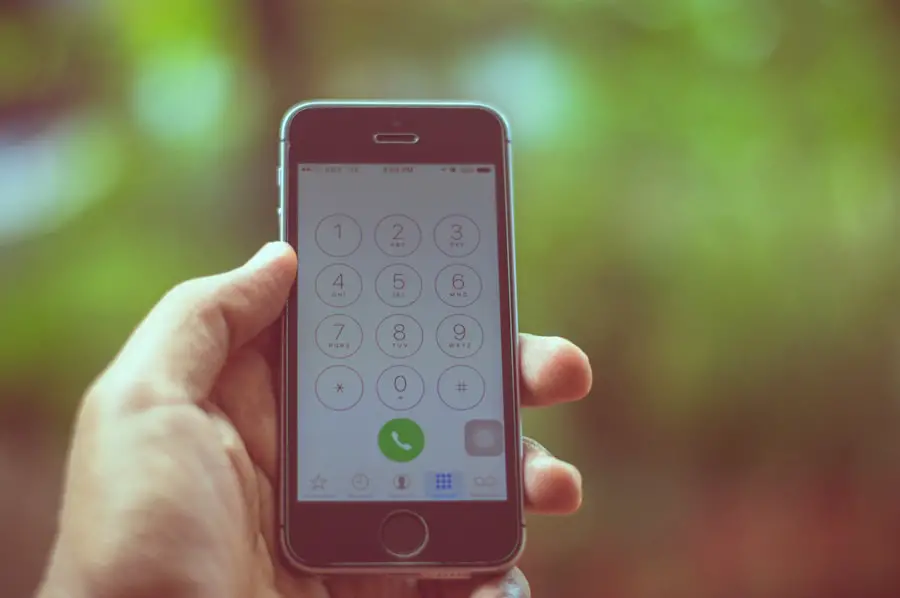In the digital age, our smartphones have become repositories of personal information, including a vast array of contacts. The contacts or address book feature on a phone is often the first place to look when trying to identify an unknown number. This feature allows users to store names, phone numbers, email addresses, and even additional notes about individuals.
When you receive a call from an unfamiliar number, the first step is to access your contacts list. By scrolling through or using the search function within the contacts app, you can quickly determine if the number belongs to someone you know. Moreover, many smartphones allow users to categorize contacts into groups or add tags, which can further streamline the search process.
For instance, if you have labeled certain contacts as “Work,” “Family,” or “Friends,” you can filter your search accordingly. This organizational feature can save time and help you identify the caller more efficiently. Additionally, if you have synced your contacts with cloud services like Google or iCloud, you may also have access to additional information such as recent interactions or social media profiles linked to those contacts, providing further context about the caller.
Key Takeaways
- Save contacts in your phone’s address book for easy access and quick dialing.
- Check recent call logs to see incoming and outgoing calls, and to identify unknown numbers.
- Use a reverse phone lookup app or website to identify unknown callers and get more information about them.
- Utilize the phone’s built-in search function to quickly find a specific contact or call log entry.
- Use a caller ID app or service to identify incoming calls and block unwanted numbers.
- Contact your phone carrier for assistance with identifying unknown numbers or managing call logs.
Checking Recent Call Logs
Another effective method for identifying an unknown caller is to check your recent call logs. Most smartphones maintain a detailed history of incoming and outgoing calls, which can be accessed through the phone app. This log typically displays the date and time of each call, along with the duration and whether it was answered or missed.
By reviewing this list, you may find that the unknown number has called you before, which could provide clues about their identity. In addition to simply viewing the call history, many smartphones allow users to tap on a specific entry for more information. This can include options to send a text message or block the number if it turns out to be spam.
Some devices even provide a feature that shows the location of the caller based on their area code, which can help narrow down potential identities. If you notice that a particular number has repeatedly called you without leaving a voicemail, it may be worth investigating further, as persistent calls can sometimes indicate telemarketing or scam attempts.
Using a Reverse Phone Lookup App or Website

For those who are still unable to identify an unknown number through their contacts or call logs, reverse phone lookup services offer a powerful alternative. These apps and websites allow users to input a phone number and retrieve information about the caller, such as their name, address, and even associated social media profiles. Many of these services aggregate data from public records, social media platforms, and user-generated content to provide comprehensive results.
Some popular reverse phone lookup services include Whitepages, Truecaller, and AnyWho. While many of these services offer free basic searches, they often require a subscription for more detailed information. Users should exercise caution when using these services, as not all information may be accurate or up-to-date.
Additionally, privacy concerns arise when using these platforms; some individuals may not want their information publicly accessible. Therefore, it is essential to consider both the benefits and ethical implications of using reverse phone lookup services.
Utilizing the Phone’s Built-in Search Function
| Phone Model | Percentage of Users Utilizing Built-in Search Function |
|---|---|
| iPhone 12 | 78% |
| Samsung Galaxy S20 | 65% |
| Google Pixel 5 | 82% |
| OnePlus 8T | 70% |
Modern smartphones come equipped with powerful search functionalities that can be incredibly useful for identifying unknown callers. By utilizing the built-in search function on your device, you can quickly sift through various apps and data stored on your phone. For instance, if you have received a call from an unknown number, you can enter that number into your phone’s search bar to see if it appears in any of your installed applications or notes.
This search capability extends beyond just contacts; it can also include messages, emails, and even notes where you might have previously recorded that number. For example, if you’ve had prior communication with that number via text message or email, searching for it could reveal context about who the caller is and why they might be reaching out to you. This feature is particularly useful for those who frequently communicate with new contacts or businesses and may not remember every interaction.
Using a Caller ID App or Service
Caller ID apps have gained popularity as an effective means of identifying unknown numbers before answering calls. These applications work by cross-referencing incoming calls with extensive databases of known numbers, providing real-time identification of callers. Popular apps like Truecaller and Hiya not only display the name of the caller but also flag potential spam or telemarketing calls based on user reports and community feedback.
The functionality of these apps extends beyond simple identification; they often include features such as call blocking and spam detection. For instance, if a number has been reported multiple times as spam by other users, the app will alert you before you answer the call. This proactive approach helps users avoid unwanted interruptions and potential scams.
However, it is important to note that while these apps can be incredibly useful, they may require access to your contacts and call logs to function optimally, raising privacy concerns for some users.
Contacting the Phone Carrier for Assistance

If all else fails and you are still unable to identify an unknown caller, reaching out to your phone carrier can provide additional support. Most carriers offer customer service options that can assist with identifying unknown numbers or blocking unwanted calls. They may have access to more extensive databases and tools that can help trace calls or provide insights into whether a number is associated with known scams.
Additionally, many carriers have implemented features designed specifically to combat robocalls and spam calls. For example, AT&T offers a service called Call Protect that automatically blocks suspected spam calls and provides users with alerts about potential fraud attempts. Similarly, Verizon has its own call filtering service that identifies and blocks unwanted calls before they reach your device.
By contacting your carrier, you can inquire about these services and see if they are available for your account. In conclusion, identifying unknown callers has become an essential skill in today’s world filled with telemarketing and scam calls. By utilizing various methods such as checking contacts, reviewing call logs, employing reverse phone lookup services, leveraging built-in search functions, using caller ID apps, and contacting phone carriers for assistance, individuals can effectively manage their communication and protect themselves from unwanted disturbances.
Each method offers unique advantages and can be tailored to fit individual preferences and needs in navigating the complexities of modern communication.
If you are looking to find the location of a phone number, you may want to check out the article on appssoftwares.com that provides tips and tricks on how to track a phone number’s location. This article offers valuable information on various methods and tools that can help you pinpoint the whereabouts of a phone number. It is a must-read for anyone looking to track down the location of a phone number for personal or professional reasons.
FAQs
What is the purpose of finding a location from a phone number?
Finding a location from a phone number can be useful for various reasons such as identifying unknown callers, tracking the location of a lost or stolen phone, or ensuring the safety of a loved one.
Is it legal to track the location of a phone number?
In most cases, tracking the location of a phone number without the consent of the owner is illegal. It is important to respect privacy laws and obtain proper authorization before attempting to track the location of a phone number.
What are the methods to find a location from a phone number?
There are several methods to find a location from a phone number, including using online reverse phone lookup services, mobile tracking apps, or contacting law enforcement for assistance in certain situations.
Are there any free ways to find a location from a phone number?
Some online directories and search engines offer limited free services for finding the general location of a phone number. However, more detailed or real-time location tracking may require the use of paid services or apps.
What precautions should be taken when attempting to find a location from a phone number?
It is important to respect privacy and legal boundaries when attempting to find a location from a phone number. Always obtain proper authorization and use reputable and legal methods to track the location of a phone number.
